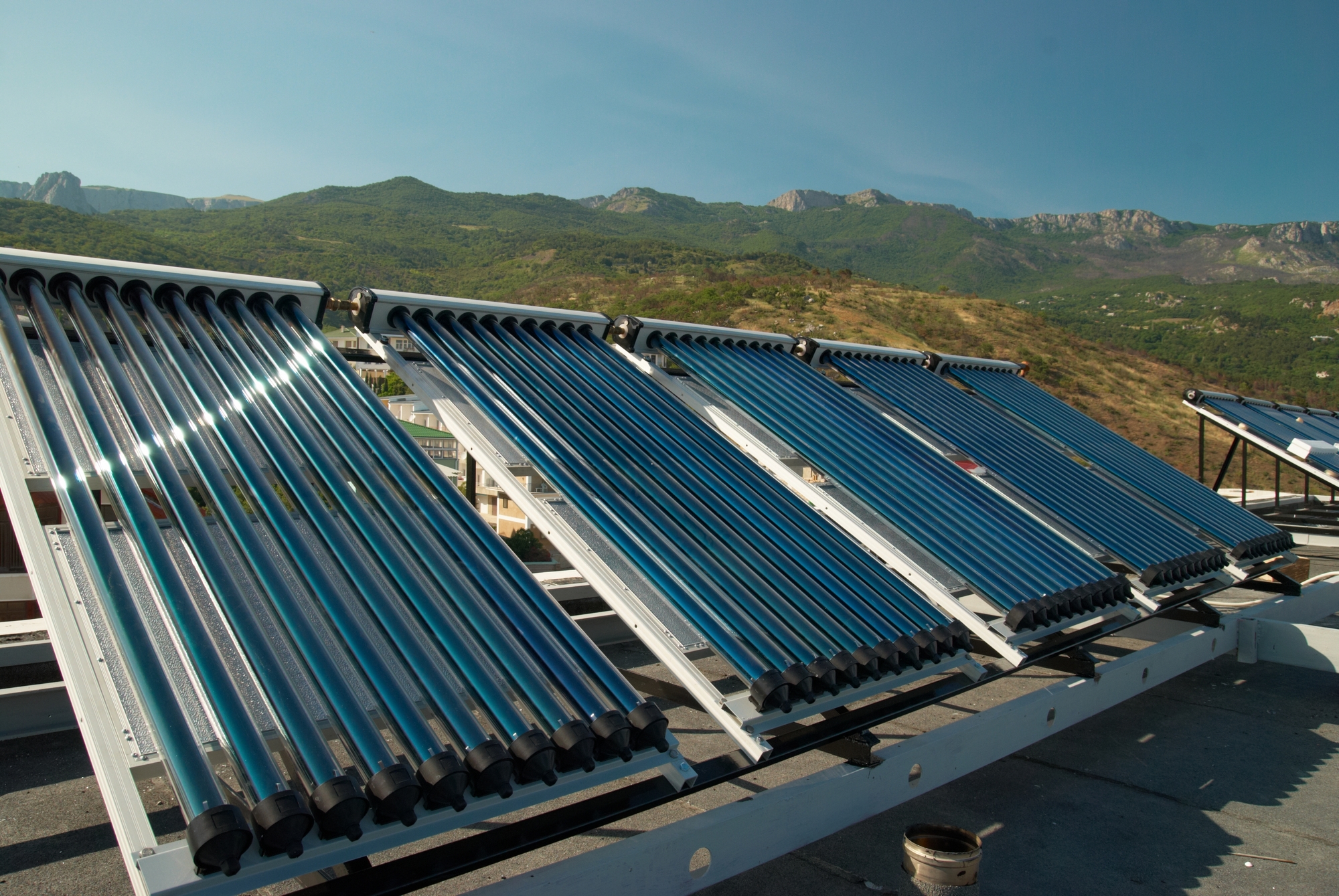In order for a solar collector to give the required return and be effective, it is necessary to understand in detail not only how solar collectors work (the general principle of operation) and how they are made, but also to know about the existence of varieties of these devices. It is on the type of collector that the features of its operation, design and cost largely depend. The most common and practical in operation are flat and tubular (vacuum) solar collectors. There are also air and open collectors, but they have their own characteristics and a limited range of applications. To understand which collector is needed in your particular case, you need to know how different types of collectors differ, their advantages and disadvantages.
Open solar collectors
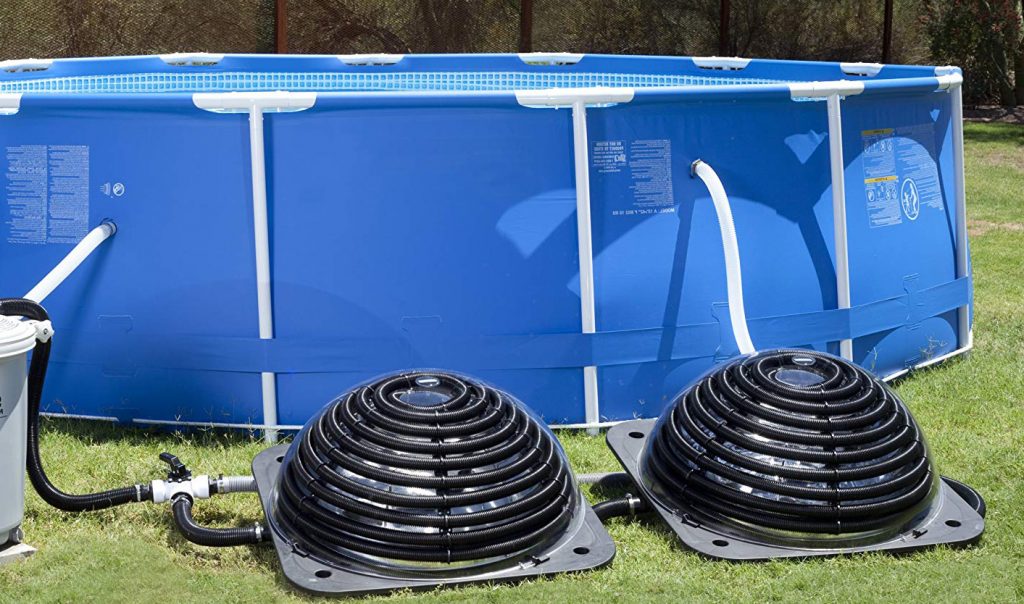
This is the most primitive and simple type of solar collectors. It is a plastic container with water and a surface made of plastic or rubber, which absorb the sun’s rays well. Usually, open collectors are used only in summer in private houses, in summer cottages for heating water in a pool or outdoor shower. The surface of such a collector is not covered with glass. With a low cost and simplicity of design, this type of collector has a low efficiency, as well as a short service life (from 1 to 3 years). Since the performance of this type of collector directly depends on weather conditions and ambient temperature, it is advisable to use it only in the southern regions of the country.
Air solar collectors
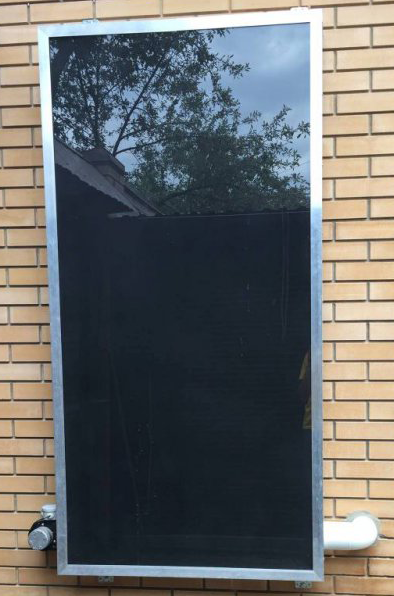
These solar devices are used for heating and air conditioning in rooms, drying plants, air recovery systems, etc. Such collectors are less common than vacuum or flat ones, and the role of the heat carrier in them is played not by liquid, but by air.
The design of the air collector is a ribbed (sometimes perforated) metal plate with a selective black coating or a system of metal tubes with good thermal conductivity. The air collector works on the principle of forced or natural supply of air heated by the action of sunlight into the room. The device is connected to the room by means of air ducts for air supply and intake, in which fans are installed that provide convection and circulation of air masses. The air itself is heated by direct contact with the heat-conducting metal, which has absorbed the energy of the sun’s rays. The design of the air collector is reliable and simple, the service life reaches 10 – 20 years. Of the minuses – the use of additional energy for fans, which increases the cost of its operation.
Flat solar collectors
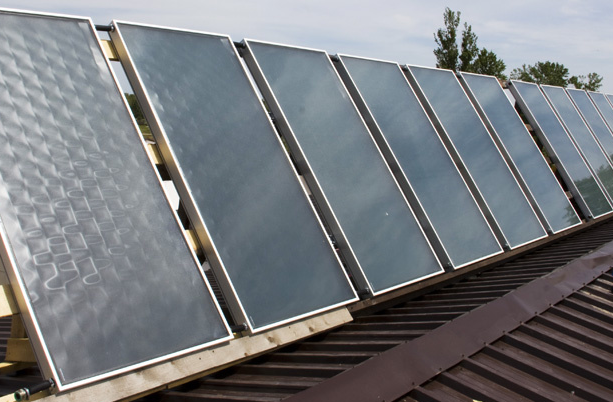
The flat plate solar collector has a layered structure. In fact, this is a plate of heat-intensive metal, which can be coated with a black selective composition that promotes better absorption and transformation of sunlight with almost zero reflection – the so-called absorber. From below, thin tubes are welded to the plate – parallel or winding (in the form of a coil tube) – a heat-transfer fluid circulates through them. The sun’s rays absorbed by the absorber warm up the coolant, and then the heat is transferred to the system.
The absorber (plate) is placed in a heat-insulating housing made of aluminum profiles, and on top it is covered with protective (ordinary or tempered) glass with minimal light transmission to create a kind of “greenhouse effect”. To minimize heat loss, it is important to make reliable thermal insulation between the walls of the housing and the absorber. As a rule, the heat-insulating layer is laid in a continuous plate under the absorber plate.
Externally, a flat solar collector looks like a solid and bulky slab, it is not easy to install, especially on roofs with a steep slope. The disadvantages include also significant heat losses in the cold season, even with a sealed case and a good heat-insulating layer. Due to the design features, the efficiency of such a solar collector may be low even with a good level of absorption of sunlight. Therefore, it makes sense to use flat-plate collectors mainly in the summer season.
Flat- plate vacuum collectors , a type of flat-plate collectors, are more efficient. In this type of device, losses are minimized by the vacuum between the absorber and the glass. At the same time, the efficiency of the collector increases, since the interaction of the absorber plate and glass is minimized, and the system itself works on the principle of mirror reflection, regardless of the angle of incidence of the sun’s rays. With a higher efficiency, which is a plus, the disadvantages include the complexity of installation and the high cost of a collector of this design.
Tubular vacuum solar collectors
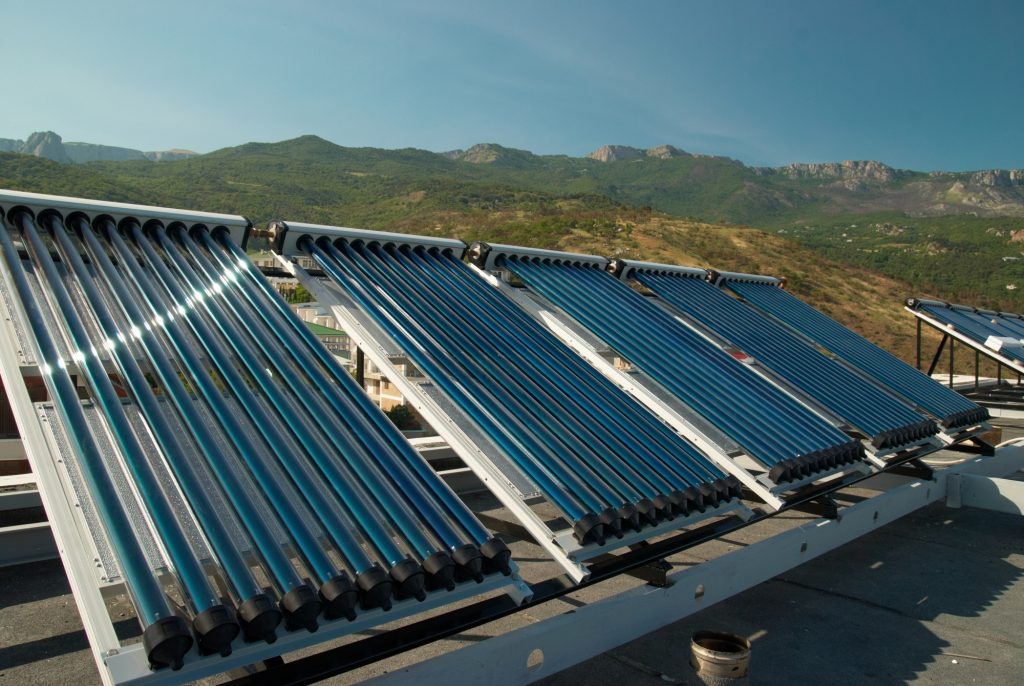
This type of solar collectors is the easiest to install and at the same time has the best efficiency in comparison with flat collectors. In all devices of this type, regardless of the manufacturer or type of construction, there is a vacuum, and the principle of mirror reflection also works, which increases the efficiency of work.
The main and fundamental difference between tubular collectors and flat collectors is the shape of the absorber. To convert solar energy into thermal energy, instead of a plate, an evacuated tube (pipe system) made of special glass with a metal rod inside it with a heat transfer fluid and a selective coating is used here. Tubular vacuum solar collectors are equipped with a special frame and can be mounted in parts – this explains their ease of installation.
The design of such a collector is a hydraulic network, where the tubes are attached to the heat exchanger body and communicate with it through thermal channels located in the middle of the absorbing plate. However, the body-heat exchanger itself and the tubes can have a different design and principle of operation.
The classic direct heating coaxial tube is quite simple and similar to a thermos. It is a flask with two walls, between which there is a vacuum. A rod (most often copper) is used as a thermal channel inside such a tube. With this design, the heat channel is in direct contact with the heat-absorbing surface of the absorber, so heat losses in collectors with such tubes are very small. These collectors work mainly seasonally, in summer, and at a pressure not higher than 0.2 atm. They are low cost and easy to install.
Coaxial vacuum tube with U-type system
The heat exchanger inside each tube of this type has a U-shape, is located inside the tube and is integral with it. Such devices are considered highly efficient, give minimal heat loss, and are easy to install. The downside is the high price, labor intensity and high cost of repairs – if one of the structural elements fails, all the others must be replaced.
Coaxial vacuum tube with thermotubes or with heat-pipe system
Inside the copper tubes of this type of collector there is a rapidly boiling liquid (a mixture of water, nitrogen-like mixtures, ammonia, aldehyde, methanol, etc.).
The rays of the Sun, falling on the wall of a thermotube of this type, heat it up, the liquid boils, evaporates and transfers the heat received in the form of rising steam to the heat exchanger. Then, having given off heat, the liquid in the form of condensate returns to the thermotube. Such thermotubes are connected to the heat exchanger using special devices (sleeves) and together form a heat-pipe system (hot pipe).
Solar collectors with such a tube arrangement are easy to install and repair, have a low cost and can work productively in any weather. Practice shows how such solar collectors work in winter – they are effective up to severe frosts (down to -30-35Cº).
Feather tubes with heat-pipe system
These tubes are considered the most efficient, productive and modern. They have a slightly different structure, but the principle of operation is the same as in coaxial tubes.
Feather tubes are flasks with one strong and thick wall, inside of which there is a copper heat-absorbing tube with a corrugated plate and an absorption layer. Thanks to this design, the vacuum is formed directly in the heat channel, and the heat channel and absorber are partially integrated into the flask. The heat-pipe system with a feather absorbent plate and a thermal channel embedded in it is half-open and immersed in vacuum with the open side.
Solar collectors with this type of tubes are characterized by high efficiency. At the same time, they are quite expensive in cost, complex and costly to repair – if one element fails, the entire system has to be changed.
There is also such a type of solar collector as a vacuum collector with direct heating coaxial tubes (with direct heat transfer) and with a tank with a heat exchanger built into it. Here, the heat exchanger, which is supplied with steam from a boiling liquid, is built into a metal tank. After heat transfer, the liquid returns to the tube in the form of condensate. In such a device, heat loss is minimal, the system is highly efficient and can operate even at very low ambient temperatures (down to -30-35Cº).
In solar collectors, the types of tubes and thermal channels can be combined with each other in different ways. And each combination will have its own performance characteristics, advantages and disadvantages. Therefore, in order to best choose the design that suits you and find out how much solar collectors cost, you need to correctly formulate the task assigned to it and, for reliability, turn to professionals to select and calculate the system.
